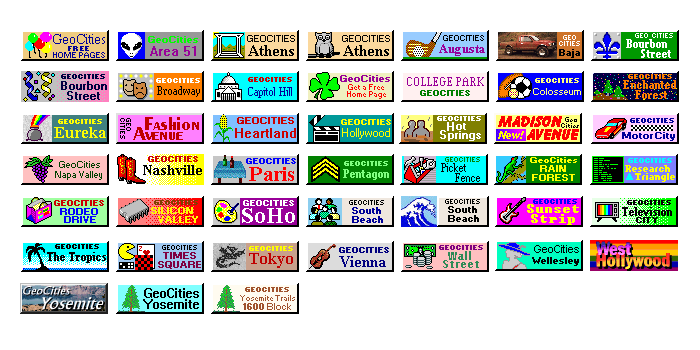
LO (and behold!)
During World War II, computers were initially linked (though not networked) in order to run complicated physics problems involved in designing the atomic bomb. In 1968, Hyperlinks were unveiled as a method to 'jump to' specific sections of text files on computers. The first data sent over the 'internet' were the letters 'L', and 'O', as an attempt to write 'LOGIN'. There is a plethora of information out there about the stepping stones that brought society to the internet of today, but for the sake of continuity, this section is composed of four landmark events, which all greatly impacted the modern (and slightly less modern) digital landscape.
The Timeline
➸ 1969, ARPAnet is established
- During the Cold War, the US Department of Defense established the Advanced Research Projects Agency, also known as ARPA. In 1969, this agency linked a system of computers together via phone line, in order to share files across America within a relatively short timespace, coming to be known as ARPAnet. While in 1969, ARPAnet was comprised of four sites, mainly across the West Coast, it grew to around twenty-thousand computers by 1987, three years before its disbandment.
In 1971, email was established. All across the world, computers were being linked together in different networks, and eventually the decision was made to universalize the language by which each network speaks in order to make one universal network of computers. That universal language was adopted by ARPAnet in 1983 and is called TCP/IP, standing for Transmission Control Protocol/Internet Protocol.
➸ 1986, NSFnet goes online
- The National Science Foundation in North America details how they were responsible for getting universities online, as well as aiding the early internet in
iron[ing] out technical issues arising from the rapidly increasing number of computers and address many practical details of operations, management and conformance
➸ 1989, the World Wide Web was invented
- Tim Berners-Lee and his colleagues would initially create the World Wide Web as a cross-computer file sharing program for his workplace at CERN, but in 1991, Berners-Lee would open the Web up for everybody to use. He made the first browser on Christmas of 1990, titled ‘WorldWideWeb’, and the first website in August 1991.
The 'first search engine to exist' award goes to Archie, (archive without the 'v',) made by Alan Emtage in 1990 at McGill University in Montreal, and initially coded to help Emtage
scour nameless files with no descriptions
at his university. Source.


➸ 1994, Geocities was founded
- While there were server hosting offerings before them, Geocities' revenue model made it attractive to an incredibly wide audience, thus popularizing the goofy, creative, personal website. According to the university of Minnesota,
GeoCities built its business on a freemium model, where basic services are free but subscribers pay extra for things like commercial pages or shopping carts




The 'Golden Era' of the Net
As time progressed, internet connections and the technology that used them became increasingly accessible. An important development in this time was the iMac; released to the public in 1998 by Apple and representing a change in their design philosophy after Steve Jobs and his company NeXT (The very manufacturers of the gray computer shown above) were bought back. For those wondering, the 'i' in iMac was highly speculated to stand for internet, seeing as how the device's target audience was not computer nerds, but rather everyday people, lacking technological 'gifted-ness', who just want to get on the Web.


These Apple products were designed with an emphasis on consumer usability, and crafted to appear inviting to the user. Along with this blue color, Apple released for both devices colors named tangerine, lime, blueberry, and for the iMac this list also included strawberry and grape. These, along with competetors became many people's first foray into the world of the Web, and for many they have come to represent a gateway into the future